Symbiosis: the vectors of abuse
The evil, in the upper line of figures, entered into a line of generations via child abuse and now uses it to reproduce itself. The twisted relationship “mother – daughter” keeps repeating itself via various forms of abuse that involve enmeshment, the extreme case of which is emotional incest i.e. a mother makes her daughter into own parent/surrogate spouse. A mother compensates for the lack of her mother’s love by making her daughter into her own mother. A daughter now is eternally “pregnant” with own mother which is “growing” inside her, pushing the daughter’s core = her Self aside from a centre. Note the vectors, of the evil going onwards unobstructed, and of each woman’s life, directed backwards towards own mother. Metaphorically speaking, each woman is “sucking the future” i.e. she derives her life from the children to come.
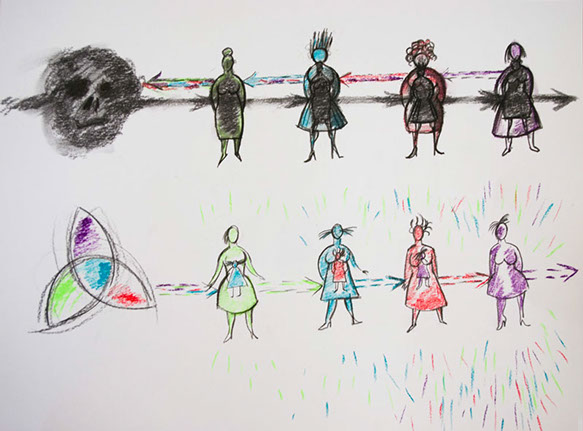
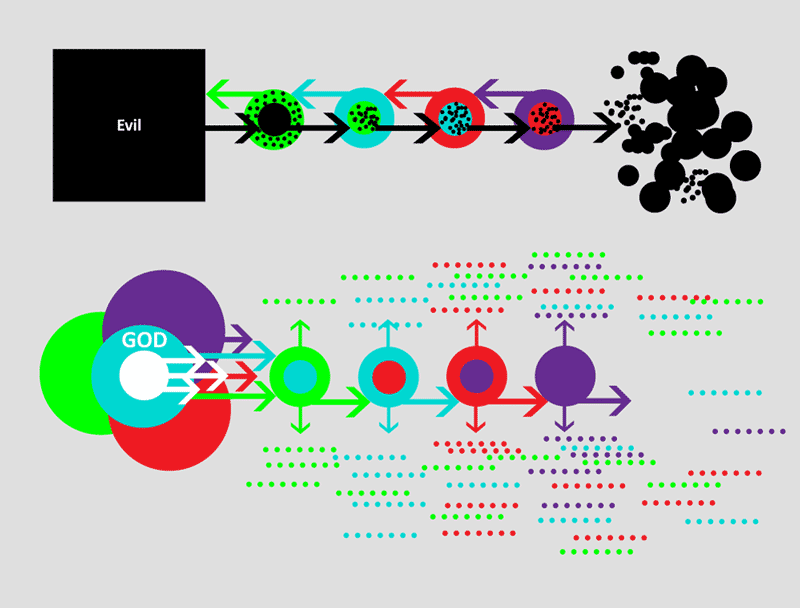
The normal order of things: each mother in the second line of figures is pregnant with her own daughter who in turns continues the family line. The vector of life for each, being in harmony with the vector of God, is directed forwards. Smaller vectors are expanding in all directions indicating the expansion of their life not just to a procreative realm but into the world; in fact here there is no need to “procreate for survival” as in the line above. The persons derive their strengths from God and their own mothers.
In the language of the colours:
First line: determination. A previous colour determines the future core; a new colour can never enter into it. The vector is towards reduction.
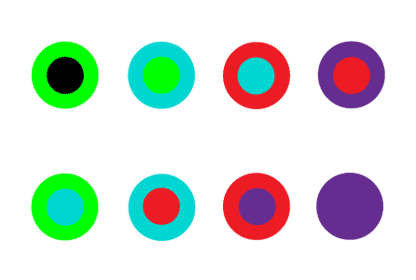
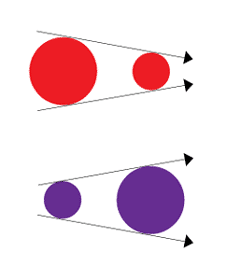
The second line: freedom. A future core colour is not determined by the previous one but is open. The vector is towards expansion.
The dilemma of the vectors
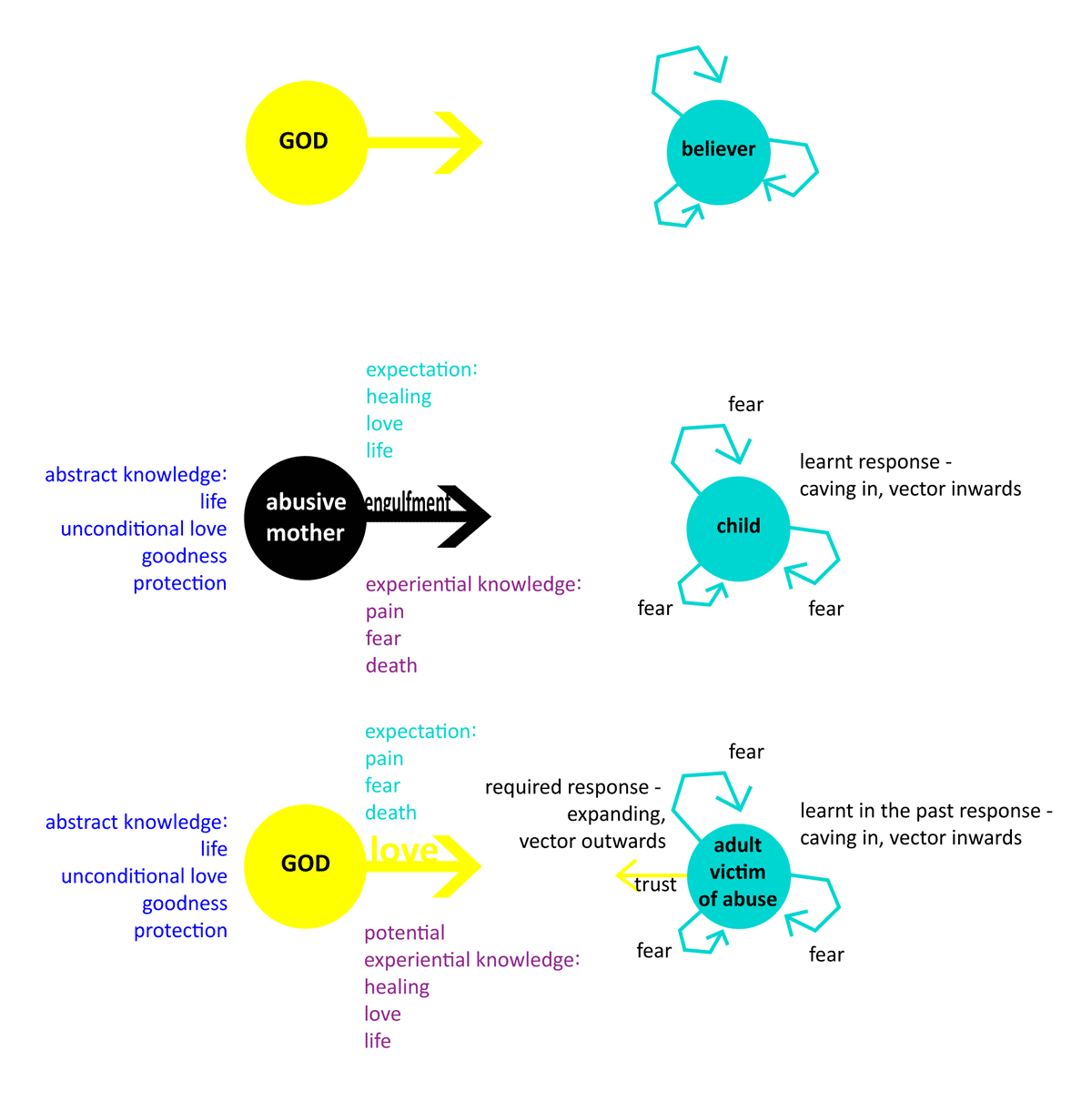
A mother is a vice-God for a small child. Via abuse the attributes of God are altered, on an unconscious level. Now an adult, an abused person is having problems with trusting God even if she embraces the Christian teaching that God is Love and there is no darkness in Him. The reason for this is not just the fact of abuse (of any abuse) but precisely that she was abused by the god-like figure which is supposed to embody, for her, all goodness. Furthermore, the mother with all the twisted attributes of God is “living in her” so to speak [enmeshment, emotional incest and so on] serving as constant counter-reference to the experience of God a daughter may begin to acquire. The advantage of a mother, over God, is precisely that a daughter has accumulated the experiential knowledge of perverse attributes of God during all her life; God came into her life second so to speak. Thus she has a huge problem of how to trust God despite an accumulated primary knowledge.
A mirror system of references
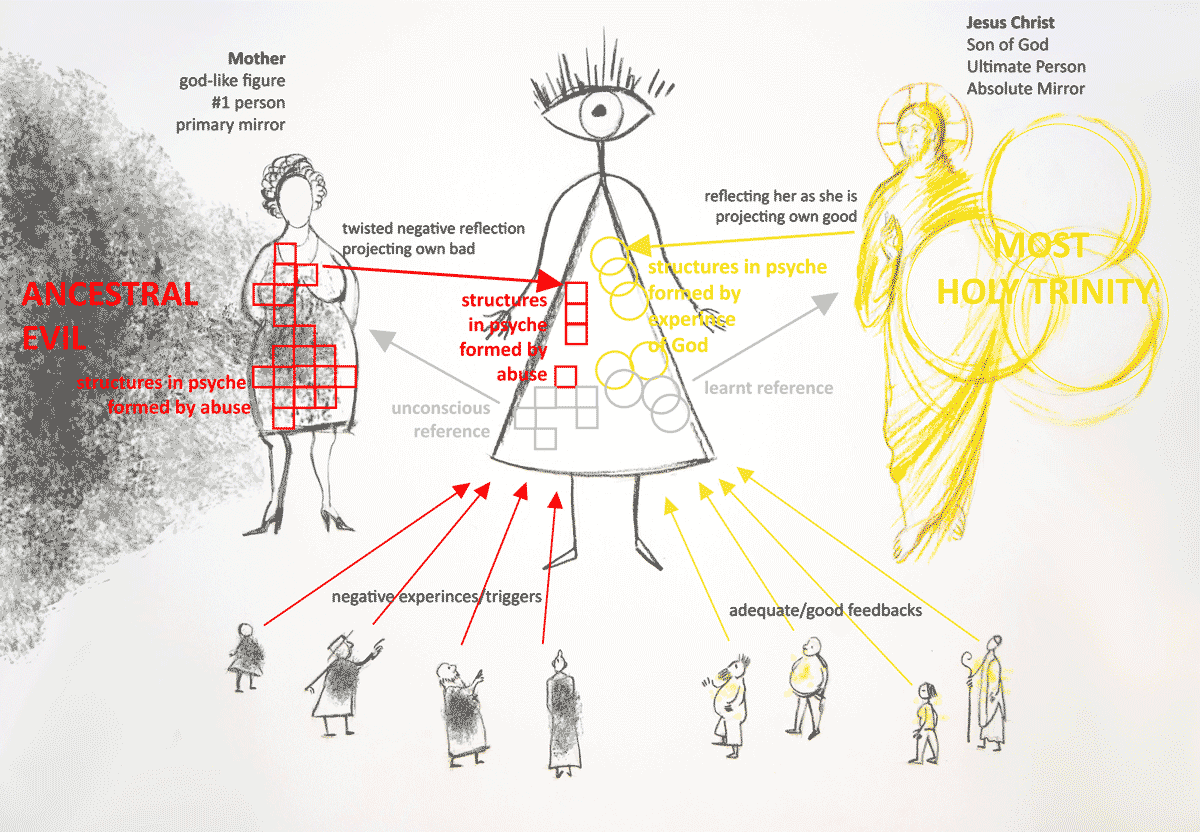
An adult person (in the centre) carries within herself “an imprint” of her mother, pathological structures formed by her mother’s abuse. They are corresponding to the similar system of structures within her mother (a mother is an abuser and a victim of the familial evil at the same time). Negative experiences in the present trigger emotional flashbacks which are the re-experiencing of overwhelming negative emotions from that childhood, typically of fear, rejection, and their own unworthiness. They are “free-floating” emotional memories of abuse detached from the facts connected to it (the loss of clear memories is caused by dissociation, a “switch off” coping mechanism of a child). A flashback works as “an unconscious reference” to her mother, a perpetuator of abuse. An example: her boss rejected the daughter’s work (a trigger) – the emotion of rejection triggers the emotional memory of overwhelming existential rejection of her as a person (by her mother) – then brings on, “glued” to that existential rejection, feelings of her own unworthiness and of impending doom.
This process mirrors the exchange of the same person with Christ – as an inverted mirror. A believer is learning to refer [to turn] to Him; the personal experiences of God are forming new, healthy structures in her psyche.
This situation is extremely torturous; a believer experiences it as if she is a battlefield of personal good and personal evil. Because she is unable to link the emotional flashbacks (fear, unworthiness, doom) to her mother those grand bubbles can be experienced as punishment from God, abandonment by God and so on. Such experiences are totally contrary to what she knows of God, rationally and experientially, hence they are the source of confusion and temptation against faith. The mother figure, a source of her torture, is hidden so it is easier attribute the torture to God.
The only way out of that maze is blind faith = trust and total surrender to Christ.